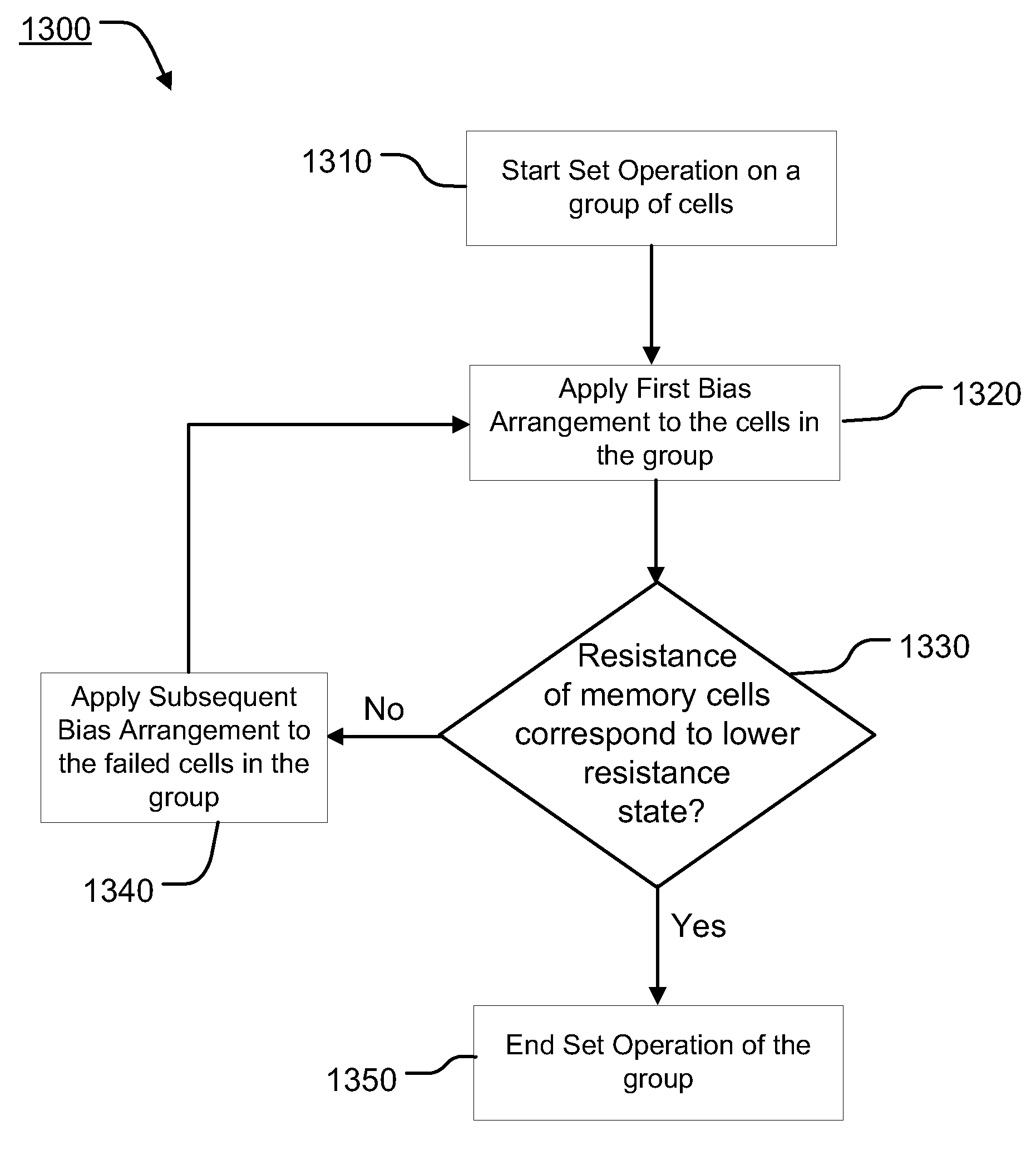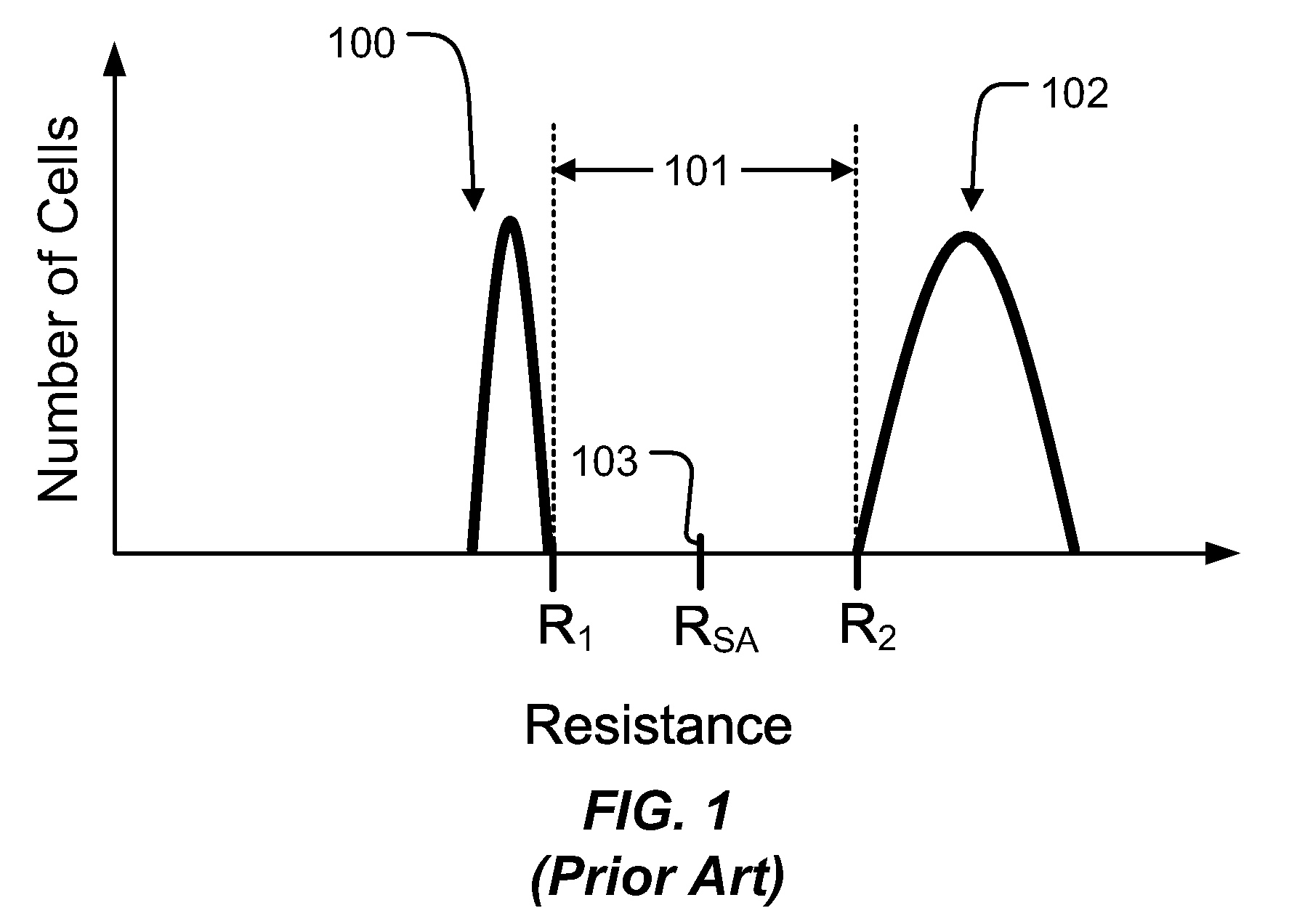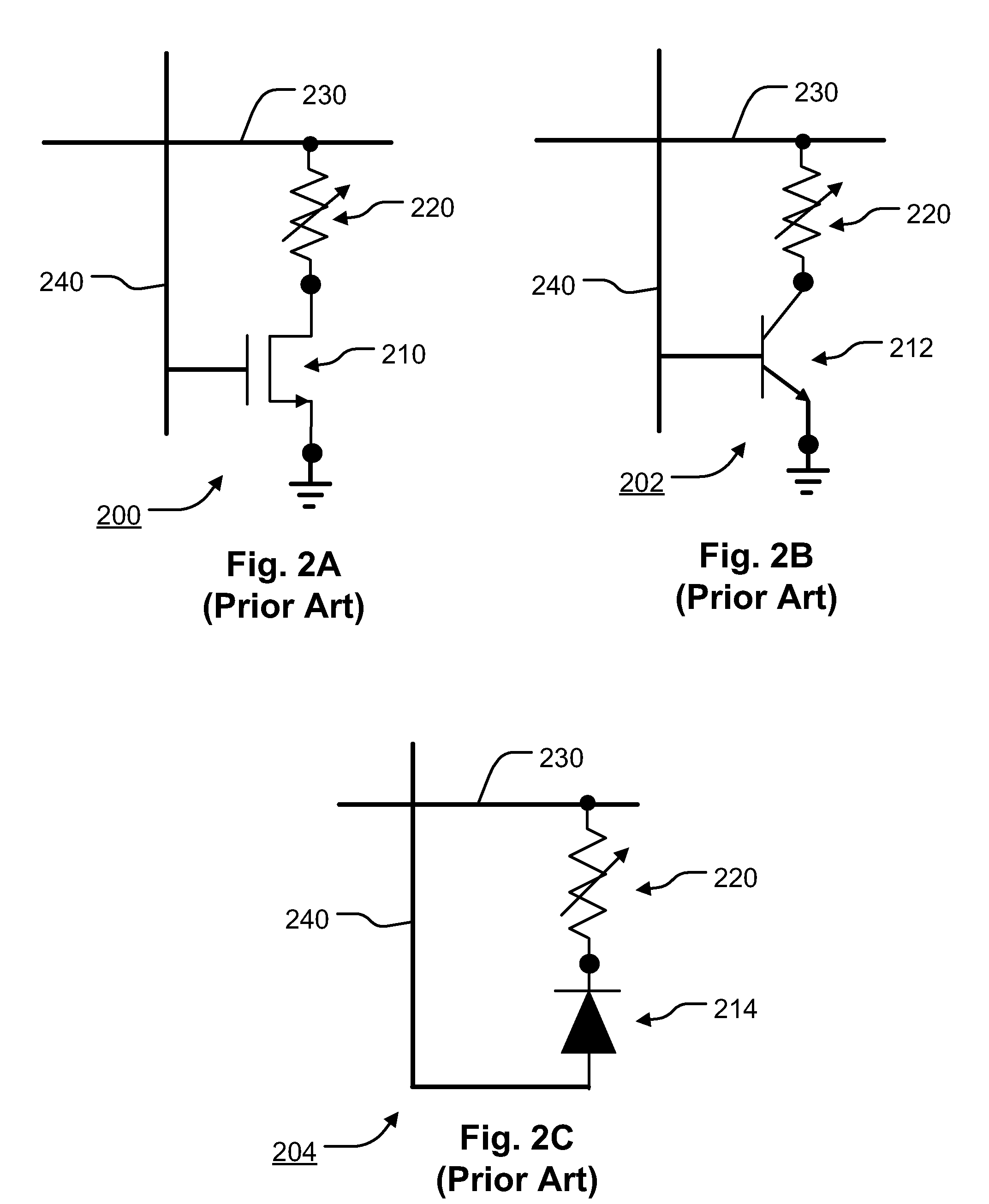Set algorithm for phase change memory cell
a memory cell and phase change technology, applied in the field of memory devices, can solve the problems of high resistance interface within the electrical conduction path, reliability issues and bit errors of those memory cells, and achieve the effect of improving endurance, reliability and data storage performan
- Summary
- Abstract
- Description
- Claims
- Application Information
AI Technical Summary
Benefits of technology
Problems solved by technology
Method used
Image
Examples
first embodiment
[0051]FIG. 6 is a flow diagram of a set operation 600 for programming memory cell 532 from a higher resistance state to a lower resistance state. FIG. 7 illustrates an embodiment of a timing diagram of the set operation 600 of FIG. 6. As will be understood the timing diagram of FIG. 7 is simplified and not necessarily to scale.
[0052]The set operation 600 for selected memory cell 532 begins at step 610. Step 610 may include, or in some embodiments be preceded by, a read operation to determine if the selected memory cell 532 need to be programmed by the set operation 600. The read operation can be accomplished by applying a read bias arrangement such as supplying voltages to word line 558 and bit line 560 sufficient to turn on the access transistor of the selected memory cell 532 and to induce current to flow in path 580 on the bit line 560 and through the memory element 548 to the source line 554 (which is terminated to ground in this example). The current is insufficient for the mem...
second embodiment
[0069]FIG. 10 illustrates a set operation 1000 in which the retry (or second) bias arrangement 1040 does not include the first bias arrangement of step 620, and instead includes the function of setting the memory cell 532. FIG. 11 illustrates an embodiment of a timing diagram of the set operation 1000 of FIG. 10. As will be understood the timing diagram of FIG. 11 is simplified and not necessarily to scale.
[0070]Referring to FIGS. 11 and 12, in the illustrated embodiment the retry (or second) bias arrangement of step 1040 comprises applying a voltage VWL-RETRY to word line 558, and applying a voltage pulse to the bit line 560 having a shape with initial pulse height of VHIGH and a trailing edge in which the voltage on the bit line 560 decreases with time as shown. The voltage pulse is sufficient to breakthrough the high resistance layer and induces current to flow in path 580 and provide energy to the phase change material of memory element 548.
[0071]As represented heuristically in ...
PUM
 Login to View More
Login to View More Abstract
Description
Claims
Application Information
 Login to View More
Login to View More - R&D
- Intellectual Property
- Life Sciences
- Materials
- Tech Scout
- Unparalleled Data Quality
- Higher Quality Content
- 60% Fewer Hallucinations
Browse by: Latest US Patents, China's latest patents, Technical Efficacy Thesaurus, Application Domain, Technology Topic, Popular Technical Reports.
© 2025 PatSnap. All rights reserved.Legal|Privacy policy|Modern Slavery Act Transparency Statement|Sitemap|About US| Contact US: help@patsnap.com



